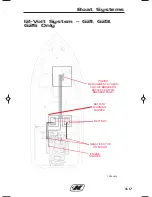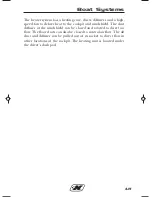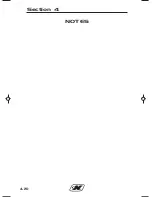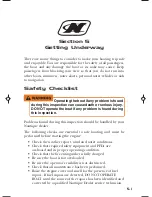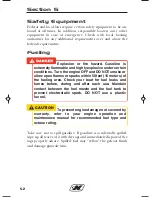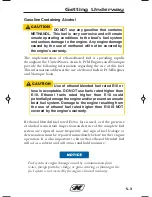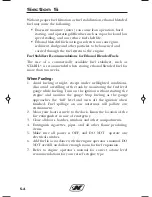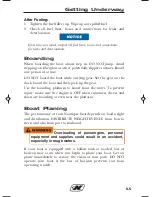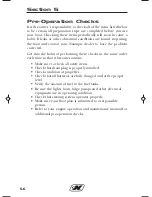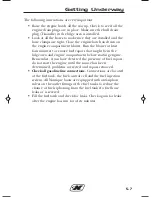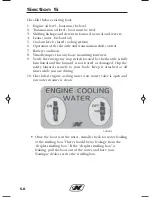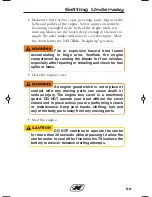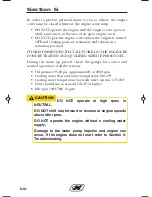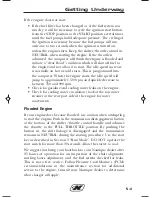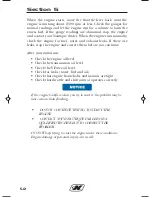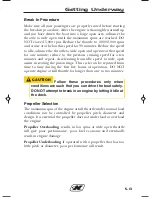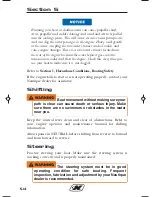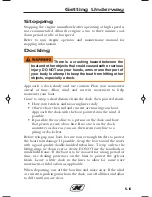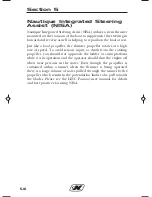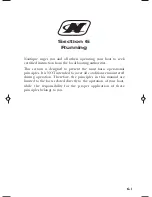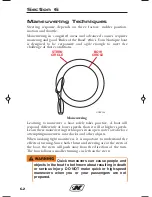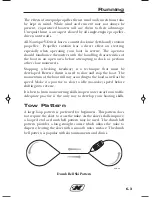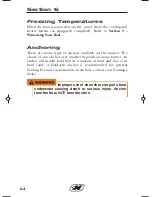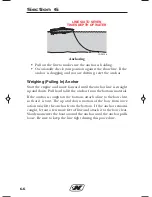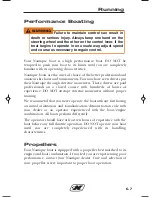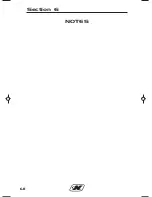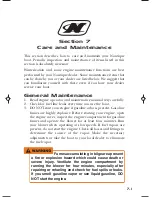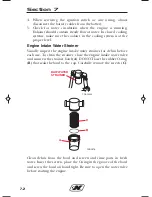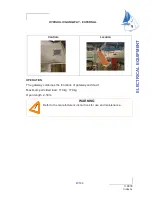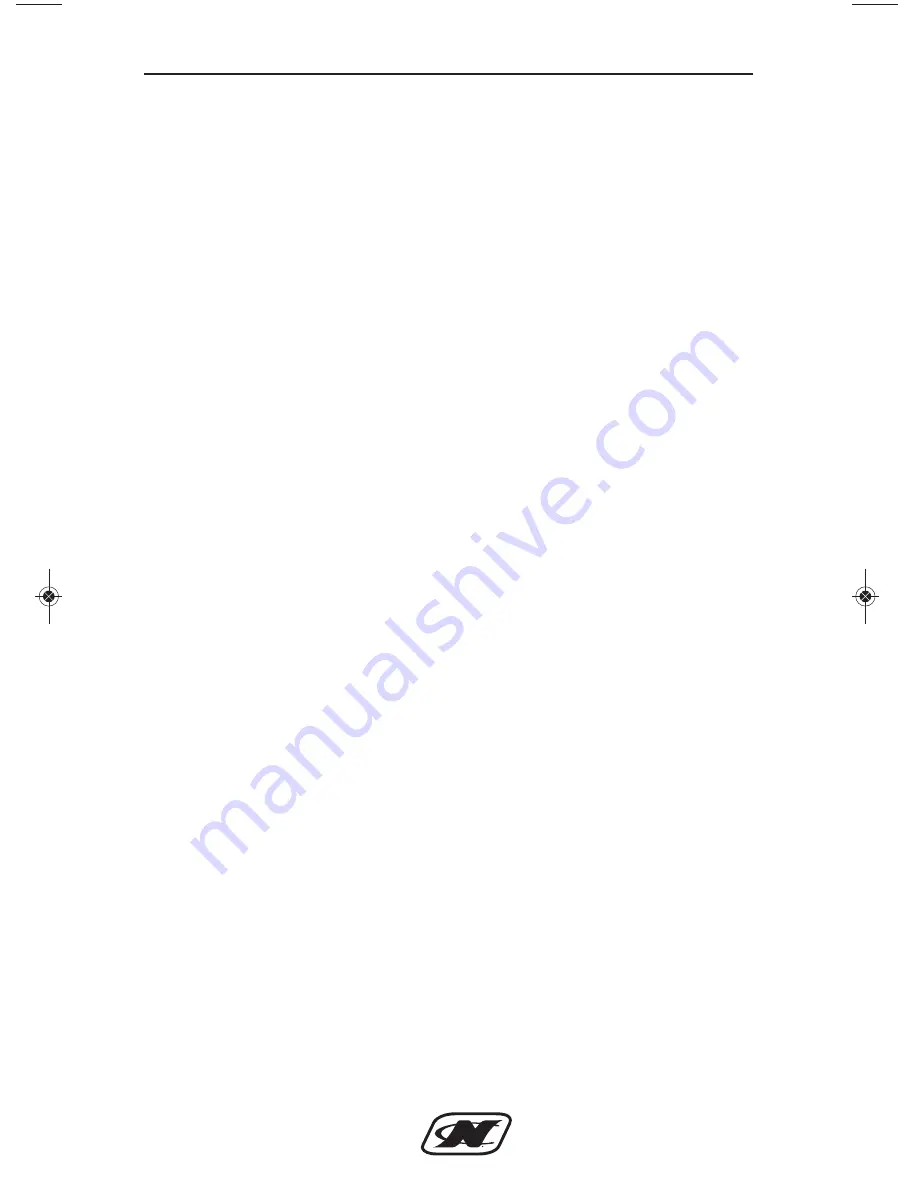
5-11
Getting Underway
If the engine does not start:
• If the fuel filter has been changed or if the fuel system was
run dry, it will be necessary to cycle the ignition start button
from the STOP position to the START position several times
until the fuel pumps build adequate pressure. The cycling of
the ignition is necessary because the fuel pumps will run
only one to two seconds when the ignition is turned on,
unless the engine starts. Keep the shifter/throttle control in
NEUTRAL when starting the engine. If the throttle is
advanced, the computer will think the engine is flooded and
initiate a “clear flood” condition which will shut off fuel to
the engine and not allow it to start. The idle speed increase
is normally on hot or cold starts. This is programmed into
the computer. When the engine starts, the idle speed will
jump to approximately 1,500 rpm and quickly decrease to
between 750 and 900 rpm.
• Check for gasoline and cooling water leaks on the engine.
• Check for cooling water circulation (look at the raw water
strainer at the rear port side of the engine for water
movement).
Flooded Engine
If your engine does become flooded, use caution when attempting
to start the engine. Push in the transmission disengagement button
at the bottom of the shifter/throttle control handle and advance
the throttle to the FULL THROTTLE position. By pushing the
button in, the shift linkage is disengaged and the transmission
remains in NEUTRAL during the starting procedure. Use the start
key as described in Section 3 “Run Mode.” DO NOT operate the
start switch for more than 30 seconds. Allow the starter to cool.
We suggest you bring your boat back to your Nautique dealer after
25 hours of operation for an inspection of the shaft alignment,
stuffing boxes adjustment, and the fuel system checked for leaks.
This is not a free service. Follow Pleasure Craft Marine’s (PCM)
recommendations in the maintenance section for additional
service to the engine. Consult your Nautique dealer to determine
what charges will apply.
Super_Air_Sec 5.qxp_Naut Air Sec 6.qxd 7/18/17 2:31 PM Page 5-11
Summary of Contents for super air 210 2018
Page 2: ......
Page 50: ...1 38 GS20 Safety Labels 1 2 3 4 5 4 4 6 7 6 8 9 12 13 14 15 16 8 9 CORC0674 10 11 Section 1...
Page 52: ...1 40 GS22 Safety Labels 1 2 3 4 5 4 4 6 7 6 8 9 12 13 14 15 16 8 9 CORC0701 10 11 Section 1...
Page 54: ...1 42 GS24 Safety Labels 1 2 3 4 5 4 4 6 7 6 8 9 12 13 14 15 16 8 9 CORC0701 10 11 Section 1...
Page 56: ...1 44 210 230 Safety Labels 1 2 3 5 6 7 8 9 10 11 12 4 4 4 4 5 13 14 CORC0625 Section 1...
Page 58: ...1 46 G21 Safety Labels 1 2 3 5 6 7 8 9 10 11 12 4 4 4 4 5 13 14 CORC0626 Section 1...
Page 60: ...1 48 G23 G25 Safety Labels 1 2 3 5 6 7 8 9 10 11 12 4 4 4 4 5 13 14 CORC0627 Section 1...
Page 109: ...2 5 NOTES GS20 GS22 GS24 G21 G23 G25 210 and 230...
Page 128: ...2 24 Section 2 210 Seating Area Designated Occupant Positions 12 CORC0612...
Page 132: ...2 28 Section 2 230 Seating Area Designated Occupant Positions 15 CORC0613...
Page 134: ...2 30 Section 2 G23 Seating Area Designated Occupant Positions 16 CORC0615...
Page 139: ...3 3 Controls and Indicators CORC143...
Page 166: ...3 30 Section 3 230 G21 G23 and G25 A CORC0505 T HANDLE T HANDLE A CORC0450...
Page 184: ...3 48 NOTES Section 3...
Page 188: ...4 4 Fuel System G21 G23 G25 Section 4...
Page 197: ...4 13 Boat Systems Port and Starboard Ballast Bags G21 G23 G25...
Page 204: ...4 20 NOTES Section 4...
Page 228: ...6 8 Section 6 NOTES...
Page 252: ...8 4 Section 8 NOTES...
Page 274: ...W 8 NOTES...
Page 275: ......
Page 276: ......

